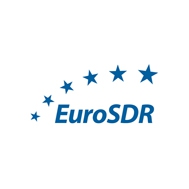Efficient capturing of 3D objects at a national level: with a focus on buildings and infrastructure
Background
Traditionally geospatial data has been restricted to two dimensions. Initially simply the result of limitations in the available technologies, subsequently the methodologies for modelling in 2D which evolved have proved to be sufficient for most geo-applications and become entrenched. However the growing awareness for our intensively used environment makes 3D information increasingly important in many applications. For National Mapping Agencies (NMA), that have a long history in collating and maintaining countrywide 2D-datasets, the major challenge is how to best adopt a 2D base into 3D environment with an established process of continuous incremental update, and making best use of available resources. This is not a transition however and the ability to retain consistency with the original source is an imperative.
Several mapping organizations that face these challenges have joint forces in the EuroSDR 3D Special Interest Group. They are: Swisstopo, Ordnance Survey Ireland, Ordnance Survey UK, IGN France, IGN Belgium, Bavaria (Germany), Landmateriet Sweden, NLS Finland and Dutch Kadaster.
Scope of the workshop
This workshop is developed in conjunction with ISPRS WGs III/4 and II/2. Many researchers have studied automated 3D reconstruction of objects and several workshops have been organized on this topic already. This workshop therefore has the multiple aims:
- to specify the minimum 3D modeling requirements of NMAs;
- to identify, together with industry and researches, the most efficient 3D object capture methodologies for very large areas (e.g. national coverage);
- recognizing that “as automated as possible” might not always be the most efficient solution (i.e. guaranteeing a valid 3D object output for 60% of the objects could be preferable over a solution that targets a higher percentage but requires higher levels of human verification);
- to examine in addition to the reconstruction processes, the issues of validation of generated objects;
- to examine the ability to remain consistent with the original source;
- to focus on the most prominent features in (the majority of) 3D topological models, buildings and transportation networks (including tunnels and bridges);
- to focus on 3D object generation including the generation of accuracy information on the generated data. Data capture methodologies that can be varied in their sources (e.g. LiDAR, aerial photogrammetry, terrestrial laser scanning, existing 2D data) are of interest but not the prime focus of the workshop;
- to explicitly address the distinction between initial data capture and the incremental update of existing national models, which will require embedding the 3D modeling within established processes of continuous incremental updating of countrywide data sets.
Overview of abstracts
- 3D models for planning, design and management, by Andreas Lippold, Product manager Autodesk, Infraworks (pdf)
- Automatic Texturing of 3D Citymodels from Aerial Images, by Gerarld Forkert, Martin Kerschner, UVM Systems GmbH (pdf)
- Multi-ray photogrammetry: A rich dataset for the extraction of roof geometry for 3D reconstruction, by McClune A.P., Miller P.E., Mills J.P. (Newcastle University) and Holland D. (Ordnance Survey UK) (pdf)
- Designing 3D Geographic Information for Navigation Using Google Glass, by Kelvin Wong, University College London (pdf)
- The building blocks of user-focused 3D building data, by Isabel Sargent, Jenny Harding, Mark Freeman and David Holland, Ordnance Survey UK (pdf)
- The process to generate a nationwide 3D virtual model of th Netherlands by Sander Oude Elberink, Jantien Stoter, Marc Post, Vincent van Altena, Hans Schevers, Anne Blankert (pdf)
- Semantic and geometric enrichment of 3D geo-spatial building models with captioned photos and labelled illustrations, by Jon Slade, Christopher B Jones and Paul L Rosin (pdf)
- Using spatial databases to efficiently manage 3D objects at a national level, by Hans Viehmann, Oracle (pdf)
Abstracts
The abstracts will be used to organize the programme. Improved versions or full papers will not be requested for the workshop. However attendees who present an abstract are automatically invited to submit full papers for review to a special issue of the ISPRS International Journal of Geo-information on this topic. More details can be found here: http://www.mdpi.com/journal/ijgi/special_issues/3D_capturing
Call for demonstrations
To show possibilities of 3D object reconstruction, the workshop will include a demonstration session. For two or three test areas, representative NMA data (2D data, high resolution Lidar, aerial photogrammetry) will be made available which could potentially be used within these demos. Please send an email to Jantien Stoter (j.e.stoter@tudelft) if you would like to experiment with these data. The data will be made available before 1st of August.
Outcomes
Besides specifying the minimum 3D modeling requirements of National Mapping Agencies, the outcomes of the workshop will identify one or two benchmark projects, such as the automated reconstruction of roof structures or the best strategy for building reconstruction while keeping consistency between footprints and 3D sources.
Organization committee
- Prof dr Norbert Pfeiffer, Vienna University of Technology, Chair EuroSDR Commission 2 “Image analysis and information extraction”
- Prof dr Jantien Stoter, Delft University of Technology, Kadaster, Chair EuroSDR commission 4 “Data specifications”.
- Prof dr Franz Rottensteiner, University of Hannover, Chair ISPRS WG III/4 - 3D Scene Analysis
- Dr Sander Oude Elberink, Chair ISPRS WG III/2 - 3D Point Cloud Processing
- David Capstick, Ordnance Survey - Senior Research Scientist (3D)
- Rollo Home, Ordnance Survey - Senior Product Manager (3D)


